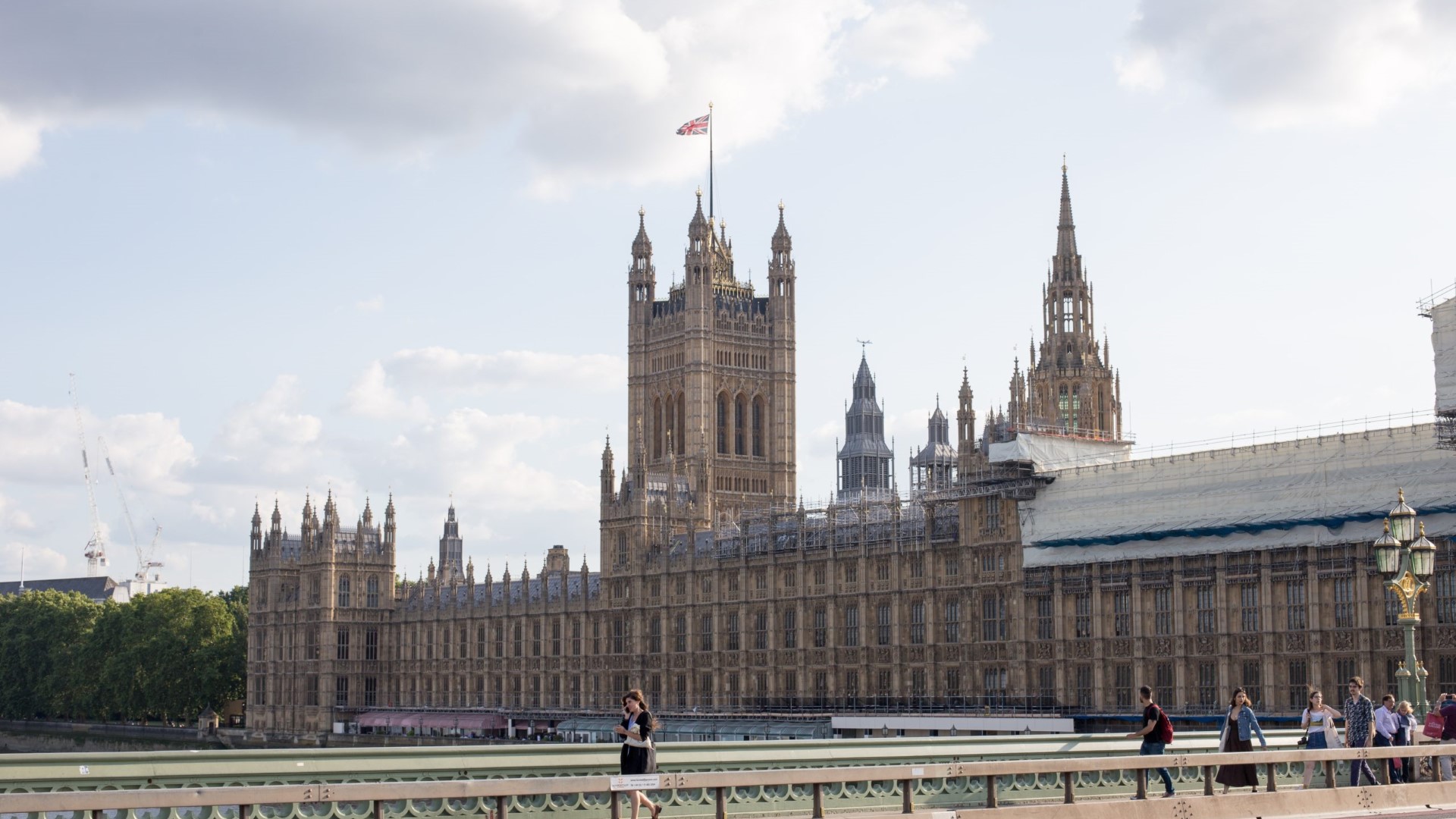Hang out with Politicians
A guided tour of the Palace of Westminster or the Houses of Parliament offers fascinating insights into British history and are the true symbols of London.
Highlights
- Admire the iconic Gothic Revival architecture
- Heighten your knowledge of British politics with access to areas that are usually restricted
- Enjoy listening to interesting anecdotes about key features of the interiors
What to see and do
The Palace of Westminster, also referred to as the Houses of Parliament, is made up of two chambers: the House of Lords and the House of Commons. At the heart of British democracy, it is in this palace that Parliament sits 35 weeks a year, submits, studies, and votes on laws.
Westminster Hall
The visit to the Palace of Westminster begins with the impressive Westminster Hall with its oak ceiling in English Gothic style.
Built in 1097 during the reign of William II, this room is the oldest in the palace. Covering an area of 1,547 square meters, it was at the time the largest hall in England and probably in Europe and was intended to impress the king’s subjects and establish his authority.
Today Westminster Hall hosts state ceremonies during which foreign leaders address the houses of Parliament.
St Stephen’s Hall stands on the site of the Royal Chapel of St Stephen, where the House of Commons sat until the chapel was destroyed by fire in 1834.
The Central Lobby
The lobby is the heart of the Palace of Westminster, served by two corridors, one leading to the Houses of Lords, and the other to the House of Commons. It is in this octagonal room that the members of the two chambers meet and allow the deputies to meet their constituents.
The House of Lords
Located in the southern part of the palace, the House of Lords is the most richly decorated room in the Palace of Westminster. Easily recognizable with its red leather benches, it is decorated with stained glass windows and allegorical frescoes.
It is in this chamber, called the upper chamber of Parliament, where the royal throne is located, on which the monarch delivers the speech to mark the start of the parliamentary session. This speech, which presents the government’s legislative program, is not written by the sovereign but by the Prime Minister.
Currently, there are 780 lords of whom about 630 are lifetime peers (appointed for life), 26 archbishops and bishops, and 92 hereditary peers. Historically the majority of lords were life members, but since 1999 the transmission of a seat to its descendants is abolished. Today, only 92 seats are occupied by hereditary peers who can no longer pass their seats on to the next generation.
They exercise the power of expertise and enact a control function of the government by asking questions. Furthermore, the Lords do not represent constituencies, and many of them do not support any of the three major parties.
Formally, they are appointed by the Queen on the proposal of the Prime Minister; they sit 35 weeks a year, approximately 140 days.
The House of Commons
Green in colour, the House of Commons is the lower house of the British Parliament, where 650 deputies oversee the work of ministers, particularly during the Question Period. The most followed are questions to the Prime Minister, which take place once a week, generally on Wednesdays.
Elected by universal suffrage for five years, they represent a constituency. Government deputies occupy the pews to the right of the president, called Speaker, while the opposition is on the other side.
The Royal Gallery
Originally called Victoria Gallery, the royal gallery is the largest in the Palace of Westminster still used for parliamentary ceremonies, receptions, or dinners.
Did you know: (3 interesting facts!)
- The reigning monarch owns the Palace of Westminster.
- The roof is the largest medieval roof in England.
- The Palace of Westminster has over 1000 rooms.
History
- 11th Century – the Palace of Westminster was built as the main residence of the kings of England until 1531 when a fire destroyed part of the building. To limit expenses, Henry VII summarily renovated it and settled nearby, in the palace of Whitehall. From then on the Palace of Westminster was used as the seat of the two parliamentary chambers and as a court.
- 1605 – the Gunpowder Plot, an attempt to blow up the Parliament was foiled.
- 1834, a violent fire destroyed a large part of the building but spared Westminster Hall, the 13th-century crypt, and the cloister of St. Stephen’s Chapel. A decision was taken to begin its reconstruction, which was entrusted to the architect Charles Barry. He built a building in a neo-Gothic style and incorporated a bell tower which would become the symbol of the British capital.
Facilities and accessibility
The Palace of Westminster is open to the public every Saturday, and most weekdays during holiday periods: Easter and summer in August and September.
Entrance to Cromwell Green where security screening of the same type is carried out as at airports.
Photographs are only authorized in the first two rooms, namely Westminster Hall and St Stephen’s Hall.
It is forbidden to sit in most chambers and more particularly on the benches of the House of Commons and the House of Lords.
The audio guides are available in 9 different languages.
In August and September, the visits take place every 15 minutes, between 9.15 am and 4.30 pm, Monday to Saturday.
The visit to the Parliament is accessible to people with reduced mobility who use a wheelchair.
A wheelchair loan is possible by contacting the “Visitor Assistant”.
